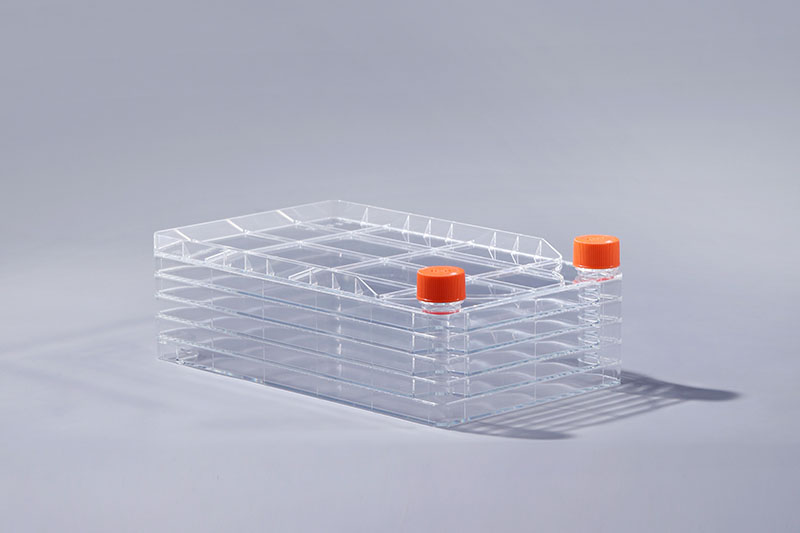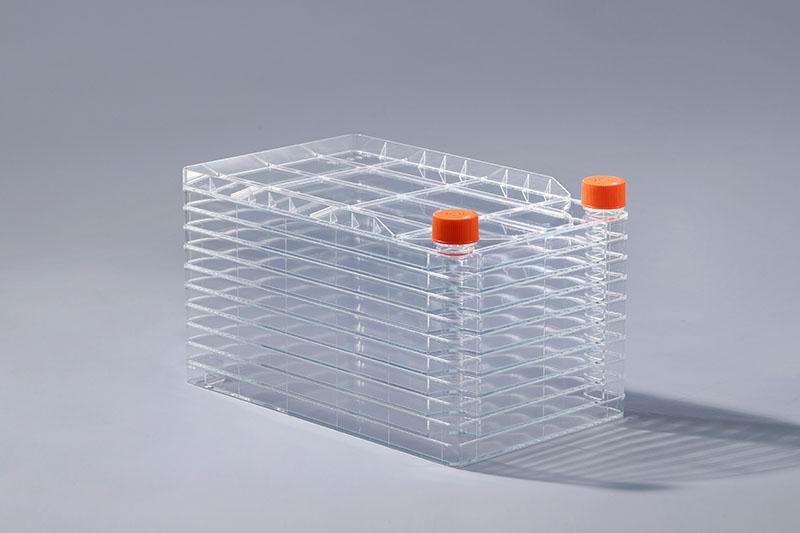The cell factory is an indispensable tool for large-scale cell culture. It has the advantages of large culture area, small footprint, and reduced pollution. In the field of vaccine preparation, this culture tool has been widely used.
Vaccines play an irreplaceable role in the prevention and control of human diseases, and the vaccine industry has become an indispensable sub-field in the field of biomedicine. With the continuous innovation and development of biotechnology, the types of vaccines have shown a diversified development trend. In addition to the well-known types such as inactivated vaccines, live attenuated vaccines, and recombinant protein vaccines, new vaccines such as viral vector vaccines, DNA vaccines, and mRNA vaccines have emerged one after another.
FuDau 5 Layers Cell Factory
As an important biological product, the complexity of vaccine development and production is self-evident. How to achieve economical, efficient and safe large-scale production of vaccines has always been the focus of the industry. Although the technical routes of vaccines are different, the general preparation and production processes are similar, and both need to go through the culture stage of cells or bacteria. At first, the large-scale production of vaccines in my country mostly relied on cell spinner culture technology. With the continuous innovation of technology, it has been gradually replaced by cell factories. At present, the cell factory has been widely used in the industrial production of new crown vaccine, oral inactivated polio vaccine, freeze-dried live attenuated hepatitis A vaccine, measles vaccine, oral live rotavirus vaccine, chickenpox vaccine, etc.
FuDau 10 Layers Cell Factory
The above is the application of cell factory in the field of vaccine preparation. In addition, it is also used in many fields such as cell therapy, gene therapy, oncolytic virus therapy, etc., and plays an increasingly important role in the field of biopharmaceuticals.
The FAI climbed 5.9 percent year-on-year in the first 11 months of 2018, quickening from the 5.7-percent growth in Jan-Oct, the National Bureau of Statistics (NBS) said Friday in an online statement.
The key indicator of investment, dubbed a major growth driver, hit the bottom in August and has since started to rebound steadily.
In the face of emerging economic challenges home and abroad, China has stepped up efforts to stabilize investment, in particular rolling out measures to motivate private investors and channel funds into infrastructure.
Friday's data showed private investment, accounting for more than 60 percent of the total FAI, expanded by a brisk 8.7 percent.
NBS spokesperson Mao Shengyong said funds into weak economic links registered rapid increases as investment in environmental protection and agriculture jumped 42 percent and 12.5 percent respectively, much faster than the average.
In breakdown, investment in high-tech and equipment manufacturing remained vigorous with 16.1-percent and 11.6-percent increases respectively in the first 11 months. Infrastructure investment gained 3.7 percent, staying flat. Investment in property development rose 9.7 percent, also unchanged.
 English
English




















































